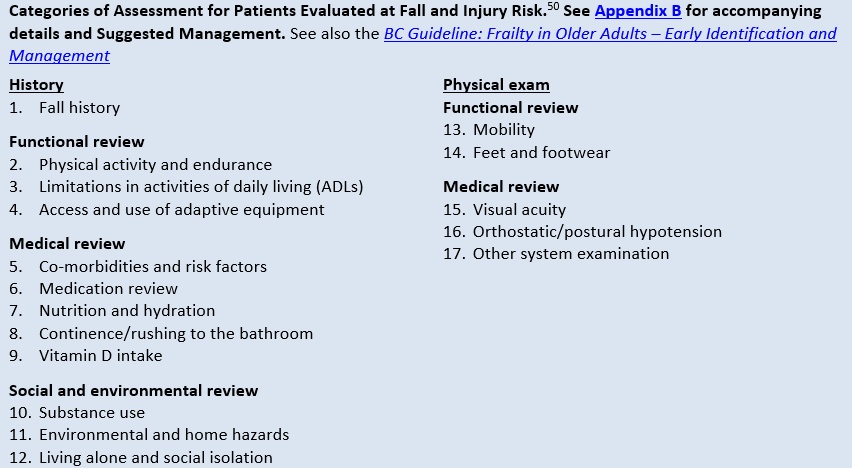The Dementia Fall Risk Ideas
The Dementia Fall Risk Ideas
Blog Article
Excitement About Dementia Fall Risk
Table of Contents9 Easy Facts About Dementia Fall Risk ShownIndicators on Dementia Fall Risk You Need To KnowHow Dementia Fall Risk can Save You Time, Stress, and Money.The Basic Principles Of Dementia Fall Risk
A loss risk analysis checks to see how most likely it is that you will fall. The analysis usually consists of: This includes a collection of concerns regarding your overall health and wellness and if you've had previous drops or problems with equilibrium, standing, and/or strolling.Interventions are recommendations that might decrease your danger of falling. STEADI includes three actions: you for your risk of dropping for your threat elements that can be boosted to try to stop drops (for example, equilibrium troubles, damaged vision) to reduce your threat of dropping by making use of effective approaches (for instance, providing education and sources), you may be asked several questions consisting of: Have you fallen in the previous year? Are you worried about dropping?
If it takes you 12 seconds or even more, it may indicate you are at higher danger for a fall. This examination checks strength and equilibrium.
Move one foot halfway forward, so the instep is touching the huge toe of your other foot. Relocate one foot totally in front of the other, so the toes are touching the heel of your various other foot.
Dementia Fall Risk Fundamentals Explained
Most drops take place as a result of numerous adding factors; consequently, managing the threat of dropping starts with determining the aspects that add to fall danger - Dementia Fall Risk. A few of the most appropriate risk elements include: History of previous fallsChronic medical conditionsAcute illnessImpaired gait and equilibrium, reduced extremity weaknessCognitive impairmentChanges in visionCertain high-risk medications and polypharmacyEnvironmental factors can also raise the danger for falls, consisting of: Inadequate lightingUneven or damaged flooringWet or slippery floorsMissing or damaged hand rails and grab barsDamaged or incorrectly fitted equipment, such as beds, mobility devices, or walkersImproper use of assistive devicesInadequate guidance of individuals residing in the NF, including those who show hostile behaviorsA successful autumn threat monitoring program requires a complete medical evaluation, with input from all participants of the interdisciplinary team

The treatment plan need to likewise consist of treatments that are system-based, such as those that promote a safe environment (suitable illumination, hand rails, grab bars, etc). The efficiency of the interventions must be evaluated periodically, and the care plan changed as needed to reflect adjustments in the fall threat assessment. Applying a loss danger monitoring system using evidence-based ideal method can lower the frequency of drops in the NF, while limiting the capacity for fall-related injuries.
Facts About Dementia Fall Risk Revealed
The AGS/BGS guideline suggests screening all adults aged 65 years and older for autumn danger each year. This screening consists of asking clients whether they have actually dropped 2 or even more times in the past year or sought medical attention for an autumn, or, if they have actually not fallen, whether they really feel unstable when strolling.
People who have fallen once without injury must have their balance and gait assessed; those with stride or equilibrium problems need to get added evaluation. A history of 1 fall without injury and without gait or balance issues does not warrant more assessment past ongoing yearly fall published here risk testing. Dementia Fall Risk. A fall danger evaluation is needed as component of the Welcome to Medicare exam

Getting The Dementia Fall Risk To Work
Documenting a drops background is one of the top quality indicators for autumn prevention and management. Psychoactive medicines in particular are independent forecasters of falls.
Postural hypotension can usually be reduced by decreasing the dose of blood pressurelowering medications and/or stopping medicines that have orthostatic hypotension as a side impact. Usage of above-the-knee assistance hose and special info resting with the head of the bed raised may likewise decrease postural reductions in high blood pressure. The recommended aspects of a fall-focused physical exam are received Box 1.

A TUG time greater than or equivalent to 12 seconds suggests high autumn risk. Being unable to stand up from a chair of knee height without utilizing one's arms suggests increased loss threat.
Report this page